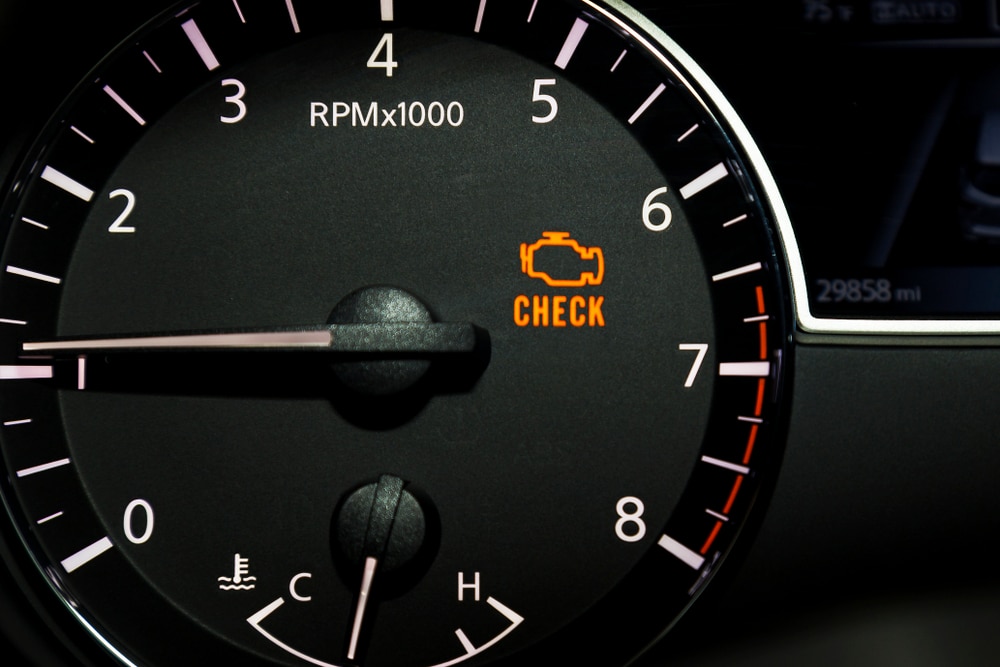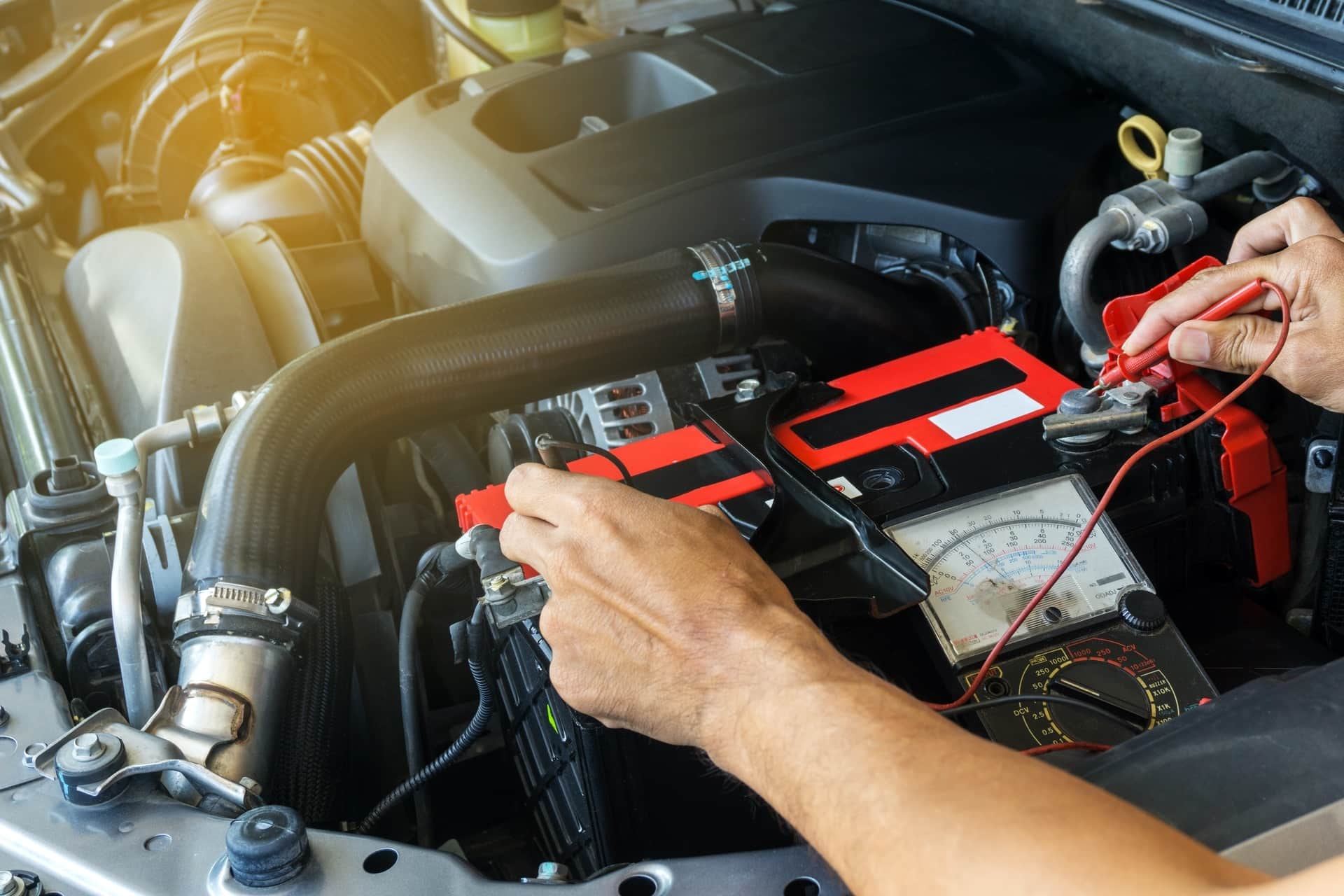Mercedes Check Engine Light
The check engine light on your Mercedes dashboard is a vital alert; it signifies potential issues within your vehicle.
This indicator acts as an early warning system, prompting you to address problems before they escalate. It preserves your car’s performance and longevity whilst keeping expensive repairs minimal.
Understanding and diagnosing why your Mercedes check engine light is on is crucial. It saves time and ensures your Mercedes remains in optimal condition.
In this article, we’ll guide you through the steps to interpret this signal, empowering you to make informed decisions about your vehicle’s health and maintenance.

Understanding the Check Engine Light
The check engine light on your Mercedes signals various issues, from minor problems like a low oil level to significant concerns such as a turbo issue. It’s part of your vehicle’s on board diagnostics system, alerting you when a component needs inspection.
Mercedes distinguishes the urgency of a check engine light primarily through its behaviour:
- A steady light indicates a minor issue
- A flashing light suggests a serious problem requiring immediate attention
Unlike many other brands, Mercedes doesn’t use colour codes to distinguish the differences.
Common Reasons for the Check Engine Light
Common triggers for the check engine light in Mercedes vehicles include:
- Emission control system faults: Problems with components like the catalytic converter or EGR valve
- Oxygen sensor failure: This leads to inefficient engine operation and increased emissions; both are problems you want to avoid.
- Faulty mass airflow sensor (MAF): A fault in this component affects the fuel efficiency by misjudging the air intake. This makes your Mercedes burn through fuel faster.
- Spark plug/ignition coil issues: Causes poor performance and potential engine misfire.
- Loose or faulty gas cap: A problem with this part can result in fuel vapour leaks, affecting your Mercedes emissions and fuel economy.
As you’d expect, certain Mercedes models or years can be prone to specific issues, whilst others can be prone to something completely different.
For example, early 2000s C-Class models often had MAF sensor failures, while late 2000s E-Class models may have seen more EGR valve problems. Knowing these tendencies can help pinpoint issues when the check engine light appears.
By recognising these common causes and model-specific vulnerabilities, you’ll have a better idea of why your check engine light is on and how you can solve it with timely and effective maintenance.
On-board Diagnostics (OBD) System Overview
Your Mercedes OBD system is a sophisticated network that monitors your vehicle’s performance, including engine speed, fuel mixture and ignition timing. It checks for malfunctions or irregularities inside your Mercedes engine and other vital components.
If your vehicle’s OBD system detects a fault that it can’t correct, it records a Diagnostic Trouble Code (DTC) and causes your Mercedes check engine light to appear on your dashboard to alert you of the issue.
You can access the diagnostic trouble codes (DTCs) by using an OBD-2 scanner, a tool that plugs into the OBD-II port, usually located under the dashboard. Doing so lets you read the codes and identify the specific issue or malfunction causing the check engine light to activate.
Unsure how to do this? Call Roade Main Garage today and let our highly experienced Mercedes specialists care for your vehicle.
Checking for Loose Fuel Cap
If your Mercedes has a loose or faulty fuel cap, it can trigger your vehicle’s check engine light because it disrupts the pressure in the fuel system.
Your Mercedes OBD system will detect this pressure change as a leak in your emission control system, which is designed to prevent fuel vapours from escaping into the atmosphere.
If you suspect that your fuel cap is causing your Mercedes check engine light, follow these simple steps:
- Find the fuel cap on your Mercedes. It’s usually located on the side of the vehicle behind a fuel door. Twist the cap counterclockwise to remove it.
- Look at the cap and the fuel inlet for any signs of damage, wear, or dirt that might prevent a good seal.
- Clean the cap and the area around the inlet if necessary. Then, place the cap back on and twist it clockwise until you hear it click. This indicates it’s securely fastened.
- After securing the cap, the check engine light may not turn off immediately. It might require several driving trips for the system to verify that the issue has been resolved.
If you’ve performed these checks and need help, call our experts at Roade Main Garage for a quality, first-time fix.
Common Diagnostic Trouble Codes and Meanings
Mercedes owners may encounter several Diagnostic Trouble Codes (DTCs) indicating various vehicle issues. Here are some common codes:
- P0300 Series (P0300, P0301, P0302, etc.): These codes indicate misfires in the engine. A generic P0300 code suggests multiple misfires, while codes P0301, P0302 and so on pinpoint misfires in specific cylinders.
- P0171 and P0174: These codes indicate that the engine is running too lean, meaning there is too much air and insufficient fuel in the combustion mixture. This could be due to a vacuum leak or a faulty fuel delivery system.
- P0401: This code indicates a problem with the exhaust gas recirculation (EGR) system, which helps lower your vehicle’s nitrogen oxide emissions. It suggests the flow is insufficient.
- P0420 and P0430: These codes suggest inefficiency in the catalytic converter’s performance, either in bank 1 (P0420) or bank 2 (P0430).
Understanding these codes and their associated issues can help you troubleshoot and address specific Mercedes problems.
If you don’t want to or can’t perform a test to retrieve the DTC codes, we can help. Our experts have decades of experience working on all Mercedes models; there isn’t an issue we can’t solve.
Call our team today.
Looking for Air Intake and Vacuum Leaks
Issues with your vehicle’s air intake system or vacuum leaks can cause the check engine light to come on.
These problems disrupt the air-fuel mixture required for your Mercedes engine to run efficiently, often causing the engine to run lean (too much air in the mixture) or rich (too much fuel in the mixture).
If your Mercedes has air intake system issues or vacuum leaks, you might experience the following:
- Unusual hissing noises coming from the engine bay, indicating a vacuum leak.
- Increased fuel consumption, as the engine compensates for the lean mixture by adding more fuel.
- Rough idling or difficulty starting the engine due to improper air-fuel mix.
Identifying and fixing these leaks early can prevent further engine problems from occurring, saving you time, money and stress. Call Roade Main Garage today and let us take a look.
Exhaust System and Emissions Issues
Your Mercedes exhaust system plays a crucial role in controlling the emissions your vehicle releases.
If there’s an issue in the system, such as a damaged catalytic converter or leaks in the exhaust manifold, it can trigger your Mercedes check engine light. These problems affect your vehicle’s ability to process and release exhaust gases efficiently, leading to increased emissions and decreased performance.
You can address common Mercedes emissions-related issues by:
- Regularly inspecting the exhaust system for physical damage or leaks.
- Ensuring the catalytic converter is functioning correctly and replacing it if necessary.
- Monitoring the oxygen sensors, which measure the efficiency of combustion and the effectiveness of the catalytic converter.
The best way to keep the dreaded Mercedes check engine light at bay is to regularly service your vehicle.
Engine Sensors and Components
Faulty sensors or malfunctioning engine components can often trigger the check engine light in your Mercedes.
These sensors are crucial for monitoring the car’s functioning and ensuring optimal performance. When they fail or provide inaccurate data, your vehicle’s onboard computer triggers the check engine light as a warning.
Common sensors associated with this warning include:
- The oxygen sensor (which measures exhaust gases)
- Mass airflow sensor (this measures the amount of air entering your engine)
- The throttle position sensor (which monitors the throttle’s position)
- Coolant temperature sensors
- Camshaft or crankshaft position sensors
If your vehicle has an issue with one of these sensors causing your check engine light to appear, call our experts for a quality fix.
Can Low Oil and Fluid Levels Cause a Mercedes Check Engine Light?
The simple answer is yes. Low oil or other critical fluids can cause your Mercedes check engine light to come on.
These fluids are vital for the smooth operation and cooling of engine components. When levels drop too low, it can lead to overheating, increased friction among moving parts and even engine failure.
It’s not a situation you want to find yourself in.
You can avoid an issue by performing regular inspections, such as checking the levels of oil, coolant, brake fluid and transmission fluid.
It’s also important to follow the manufacturer’s recommended service intervals to ensure all fluids are replaced or topped up as necessary. You can find more information about your model in your Mercedes owner’s manual.
If in need of help, call our Mercedes specialists at Roade Main Garage today.
When to Seek Professional Diagnostic Assistance
Our experts recommend seeking professional help for diagnosing your Mercedes check engine light if:
- The check engine light stays on or flashes after checking for common issues (like a loose fuel cap).
- You lack the tools or expertise to diagnose the issue yourself.
- Your Mercedes shows signs of operational problems (e.g., unusual noises, stalling, or performance issues).
At Roade Main Garage, our technicians are Mercedes experts. We’ve got decades of experience working on all Mercedes models and can solve any problems you have.
Our specialists use a comprehensive 15-step diagnostic process to diagnose any problem your vehicle may have during the first fix. This prevents the need for annoying repeat visits, saving you time, money and stress.
Clearing the Mercedes Check Engine Light
It’s generally safe to clear your Mercedes check engine light yourself after addressing the issue that triggered it.
However, simply resetting the light without resolving the root cause can lead to more significant issues down the line. So always ensure the problem is 100% solved before you clear the warning light.
After fixing the issue, your check engine light can be reset using an OBD-2 scanner. Follow these steps:
- Connect the scanner to the OBD-2 port under your dashboard.
- Follow the device instructions to clear the stored codes.
- Start the vehicle to ensure the light does not come back on.
If the light returns, we recommend bringing your vehicle to our experts for further diagnosis.
Preventive Maintenance Tips
There are some handy preventive measures you can take to significantly minimise the likelihood of your Mercedes check engine light coming on.
The key is adhering to a regular maintenance schedule. This includes:
- Timely oil and filter changes
- Ensuring fluids are at proper levels
- Replacing worn-out parts before they fail
- Having periodic inspections of the electrical system, emissions system and engine components.
Routine maintenance helps prevent the check engine light from lighting up and improves your Mercedes’s overall health, ensuring it runs smoothly and efficiently for years to come.
Need help keeping on top of your Mercedes maintenance? Call Roade Main Garage today.



